I like a natural looking garden. I’ve said it before; I’m sure I’ll say it again. I have several garden beds that reflect this love of the wild and untamed beauty of Nature’s own design.
Take this iris bed, for example:
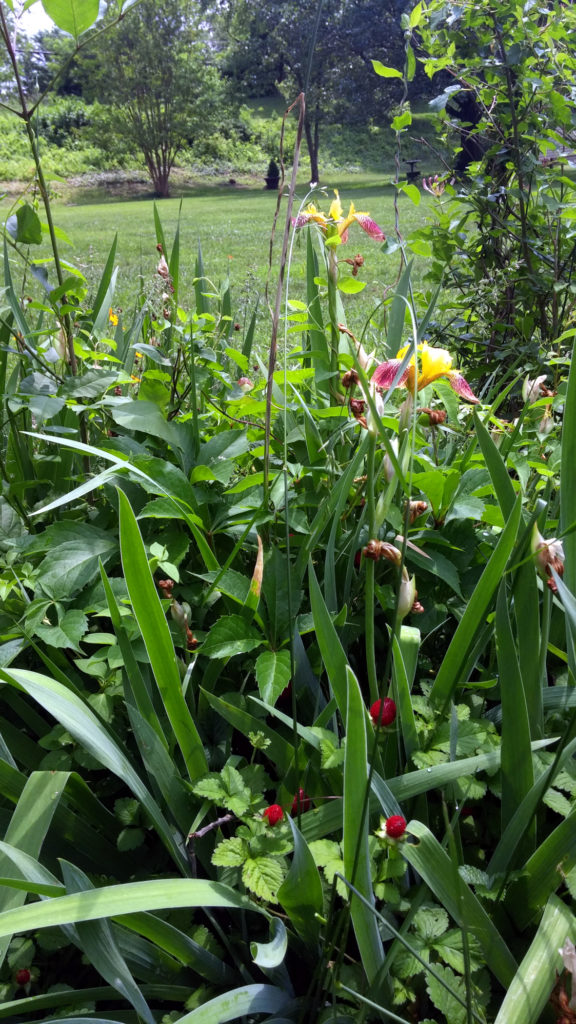
The wild strawberries moved in among the irises, and the bright red berries entice the eye in a sea of green foliage that might otherwise be boring. Even though this bed is a bit crowded and in need of thinning, the overall aesthetic of the wilderbed is one I enjoy and admire. The juxtaposition of Order (the green lawn) and Chaos (the wilderbed) offers a high contrast viewing experience. It is to me both visually exquisite and viscerally resonant. To wit:
Order is boring. Chaos is confusing. The two together are magic.
So perhaps you can understand my disappointment when the beautiful vines I found growing up my trees and around my pond and through my wilderbeds were a native nasty that could not be allowed to stay.
Its name?
Poison Ivy
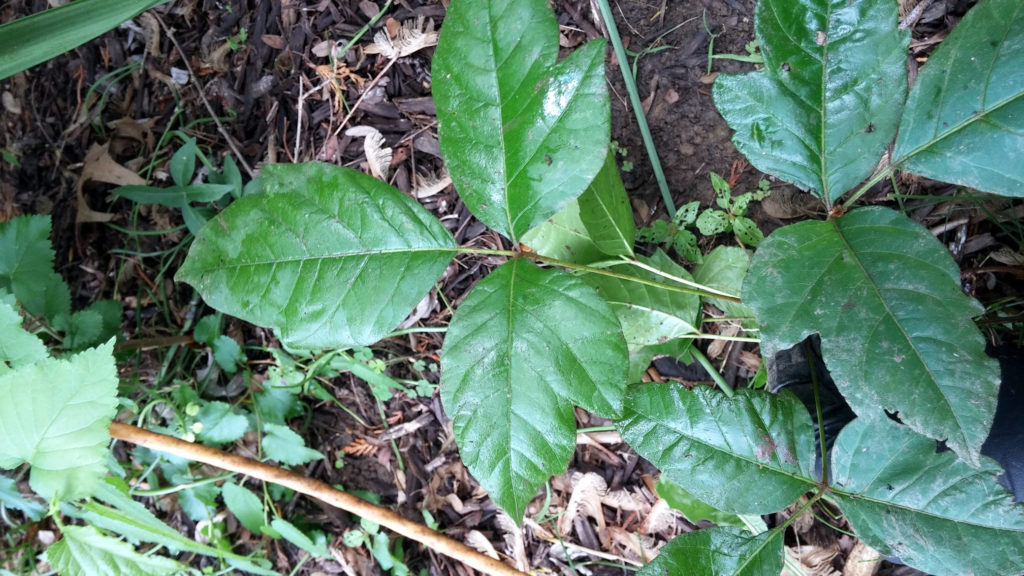
Oh why, oh why-vy
Are you so itchy and so slivy?
Did you have to come to my hive-y?
Oh, poison ivy.
I can’t let you stay alive-y.
For your death I must strive-y.
Now it’s time to say good-bye-vy,
Poison ivy.
Poison Ivy is a woody vine with smooth OR slightly scalloped dark green leaves that grow in bunches of three (trifoliate) with a dollop of deep red where the leaflets connect. That red is a sign of things to come, for when the autumn sun shines, these leaves turn a brilliant scarlet. Poison ivy is a beautiful plant. Ah, cruel beauty! It’s a shame it’s also hazardous to humans.
Urushiol, a skin-irritating oil, is the culprit. It causes a severe allergic reaction in most people, though about 15 percent of the population are resistant to it. Resistant, not immune. An important distinction. Even if one falls into the lucky 15 percent, repeated exposure to urushiol can weaken that resistance, so it is always beneficial to tread carefully when dealing with poison ivy.
Poison Ivy Disposal
Getting rid of poison ivy is tricky. You don’t want the poison ivy to make contact with any part of yourself. I wore long pants and a sweatshirt (which was too hot for this time of year, but whatever) and latex gloves to pull the devil vine out, roots and all.
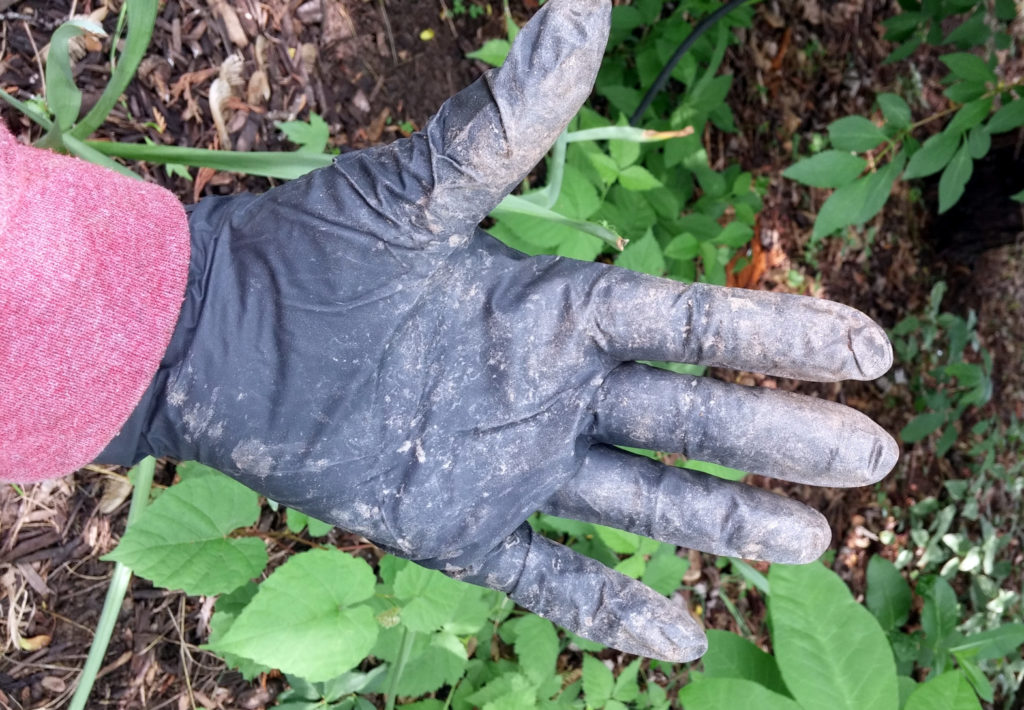
The other aspect that makes removing poison ivy tricky is that it has three highly effective survival properties. Poison ivy 1) spreads by rhizomes (subterranean stems, or creepers); 2) regrows from root clusters (roots that transform into stems, basically); and 3) is propagated by seed. This means that:
1) Poison ivy rhizomes spread everywhere, underneath the soil, so even if you think you got all of it, there is probably more several feet away (ad nauseam).
2) If you do not pull out or kill the entire root, poison ivy will grow back.
3) Even if by some miracle you are able to remove or kill the poison ivy plants in their entirety, a bird could eat poison ivy berries from somewhere else and poop the seeds back into your yard and infect your garden once more. So much fun.
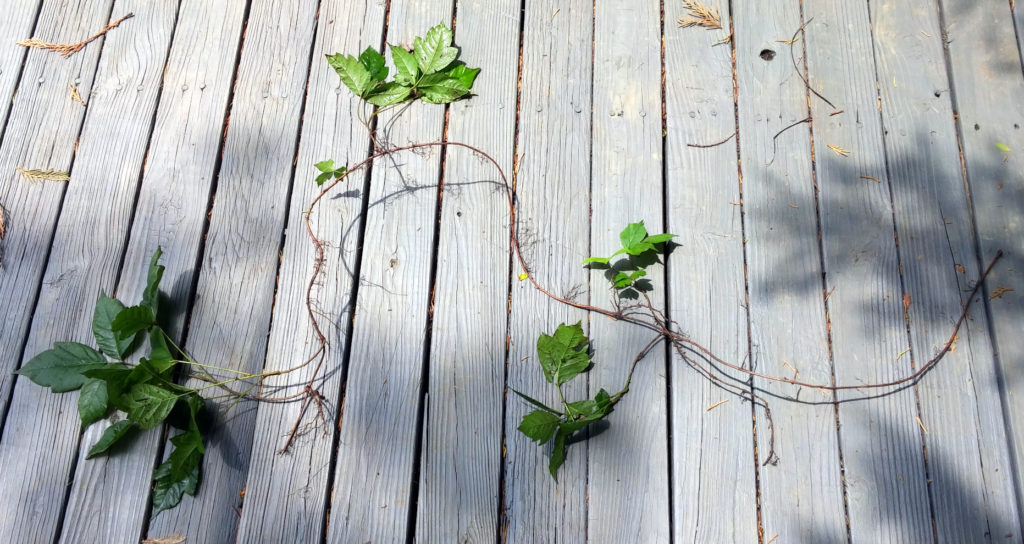
Only the bits with leaves were above ground. This was not the longest thread of poison ivy I removed either. I pulled others that were easily three times this length.
So I decided to brute-force pull up all the poison ivy in my garden. That means I located all the visible leaves; followed the maze of rhizomes and pulled them up; dug around the roots for purchase and pulled them up; and then tossed the remains into a garbage bag because that’s what poison ivy is: garbage. (And because the garbage bag will protect anyone else who comes in contact with it.)
It went to the landfill (vs yard waste pick-up or composting) because I did not want even a whiff of a possibility that the poison ivy will grow back from these cast-offs. I would normally advocate for options that keep landfill waste to a minimum, but this I don’t feel too bad about because poison ivy is organic matter and will decompose in the landfill.
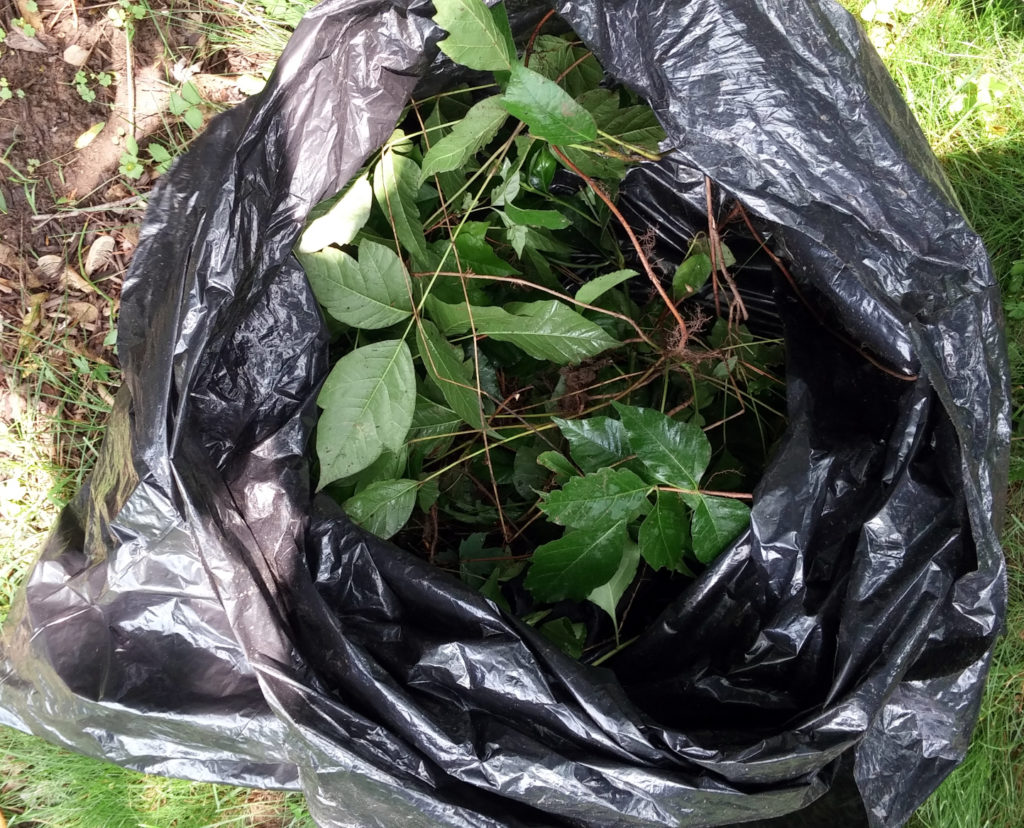
Chemical cures for (killing) poison ivy are available. I chose to stay away from chemical solutions, however, because of the inevitable collateral damage. Poison ivy likes to grow in areas like the one pictured below, and because of the twining, twisty, tricky, sticky way poison ivy grows, I did not have confidence that the killing agent would affect ONLY its intended target and NOT KILL the plants I wanted to keep.
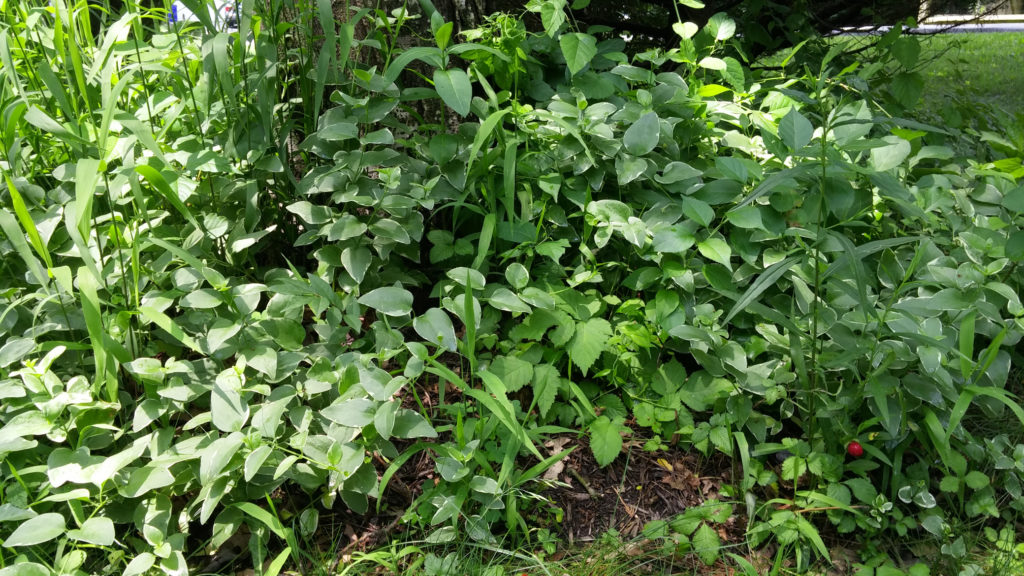
Creepers Worth Keeping
Poison ivy is not the only creeper found in gardens, and some of them are worth keeping. Wild strawberries are one. I’ve mentioned them already. I love wild strawberries and encourage them to grow throughout my garden.
Virginia creeper and wild raspberry are others. Both are often mistaken for poison ivy, and many a gardener ends up pulling them out too. If you are going for a cleaner, more controlled aesthetic, or you have some plantings that can’t be crowded, then sure, pull them out when you find them. But if, like me, you want that natural look and are inclined to vines, then you can’t go wrong with Virginia creeper and wild raspberry. They make great additions to the garden and provide that hint of chaotic interest that I am so fond of. They do require thinning from time to time, however. Otherwise they might choke out anything less robust than themselves.
Virginia Creeper
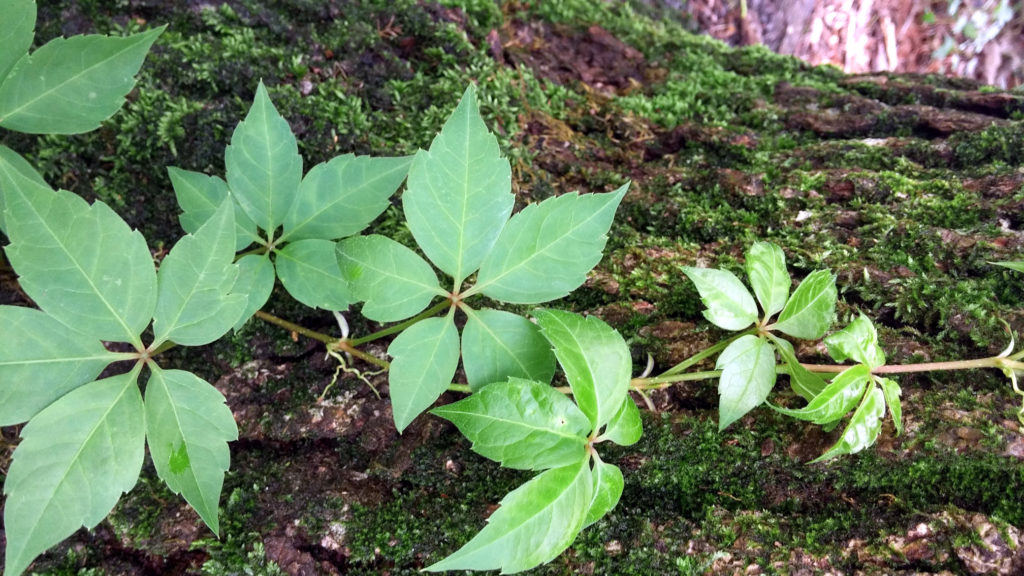
Note the shape and color of the leaves. They are almost identical to poison ivy, and it is easy to see how Virginia creeper could be mistaken for its more toxic cousin. However, Virginia creeper leaves grow in groups of five (quinquefoliate), which makes it easy to distinguish between the trifoliate poison ivy. Like poison ivy, Virginia creeper’s autumn transformation is quite stunning, going from green to bright red.
Now a small word of warning; Virginia creeper is part of the grape family and does produce berries that are harmful if ingested. Likewise, the rest of the plant contains raphides, which can irritate the skin for some people.
Wild Raspberries
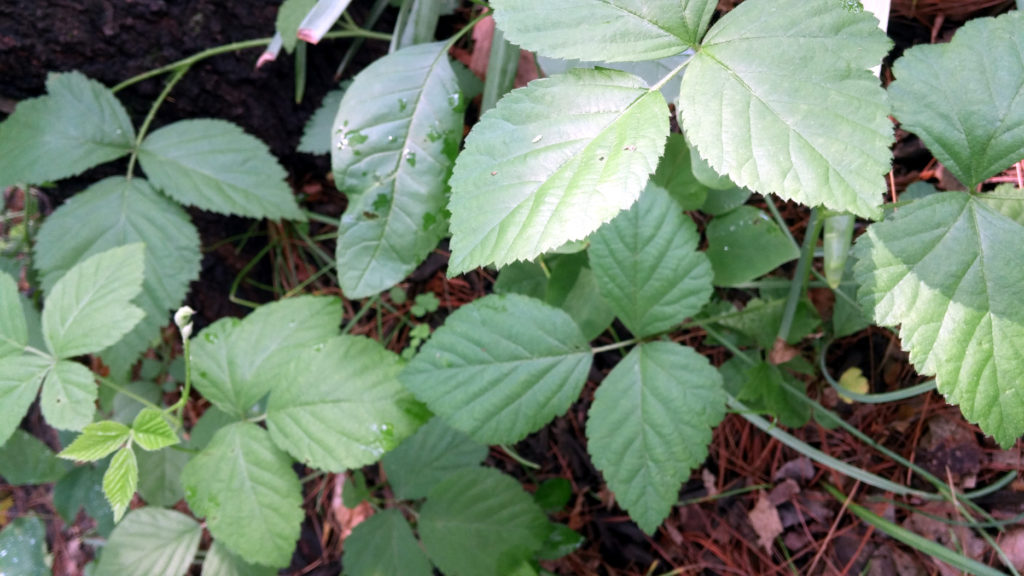
Cluster of three leaves: check. Creeper: check. Green: check. Grew out of nowhere: check.
The similarities to poison ivy are many. However, wild raspberries are usually a lighter green than poison ivy (though young poison ivy leaves are lighter than their mature counterparts). Wild raspberries can have clusters of three or five leaves, and those leaves are toothed, or serrated, unlike the smoother scallop of poison ivy. The biggest difference between the two, however, is that wild raspberries have what most people refer to as thorns.
Botanically, pedantically, these “thorns” are really prickles and are differentiated from proper thorns in that prickles sit on the surface and are a feature of the plant’s epidermis or bark whereas thorns are modified stems.
TANGENT: Raspberries and roses are in the same family (Rosaceae). That means (you guessed it) that roses don’t have thorns either. That’s right, roses have prickles. But for practical purposes, it’s okay to call them thorns. We all do, even those who know better.
The berries each produce are also quite different from each other. Wild raspberries can range in color from white to yellow to red to black. They look plump and inviting. Poison ivy berries are small, gnarly, dumpy whitish, and look disgusting.
I’m looking forward to autumn. I can’t wait to enjoy the fruits of the wild raspberries and the bright red bursts of the Virginia creepers. But for now, I’m happy with the wilderbed Mother Nature and I created. It has a summer woodland glade aesthetic that is free from poison ivy. For now.
